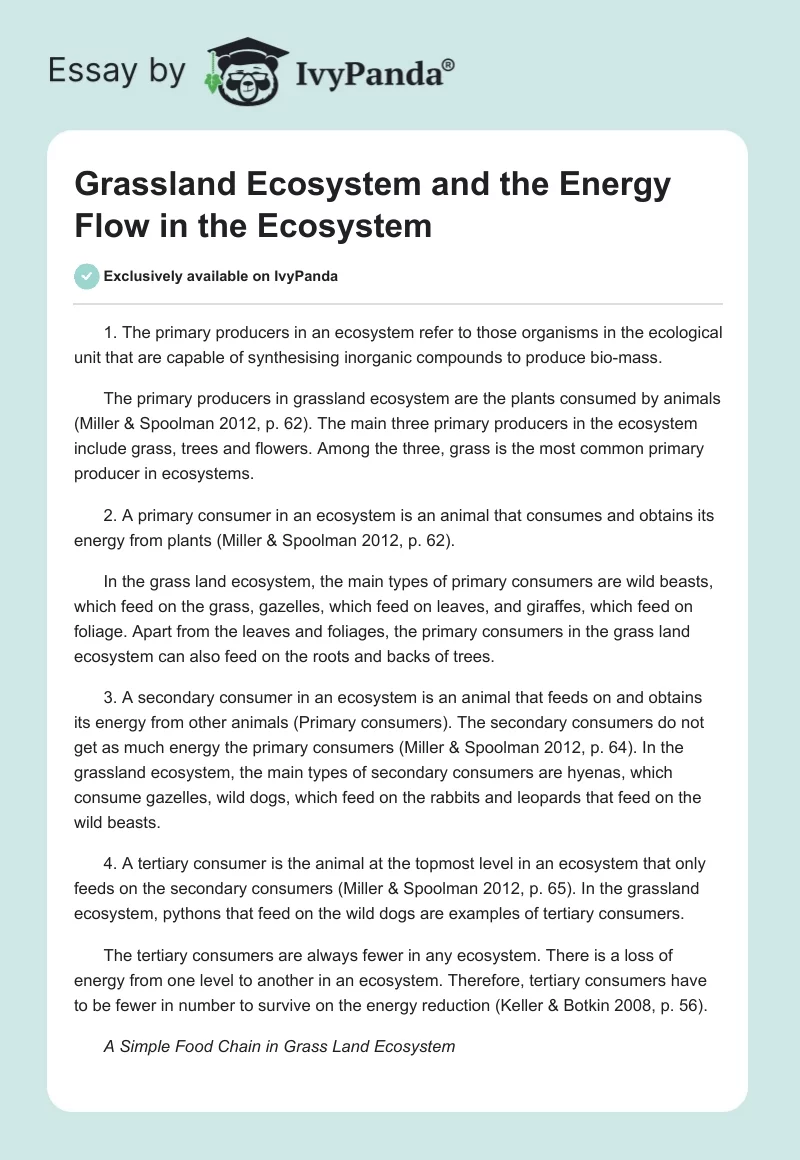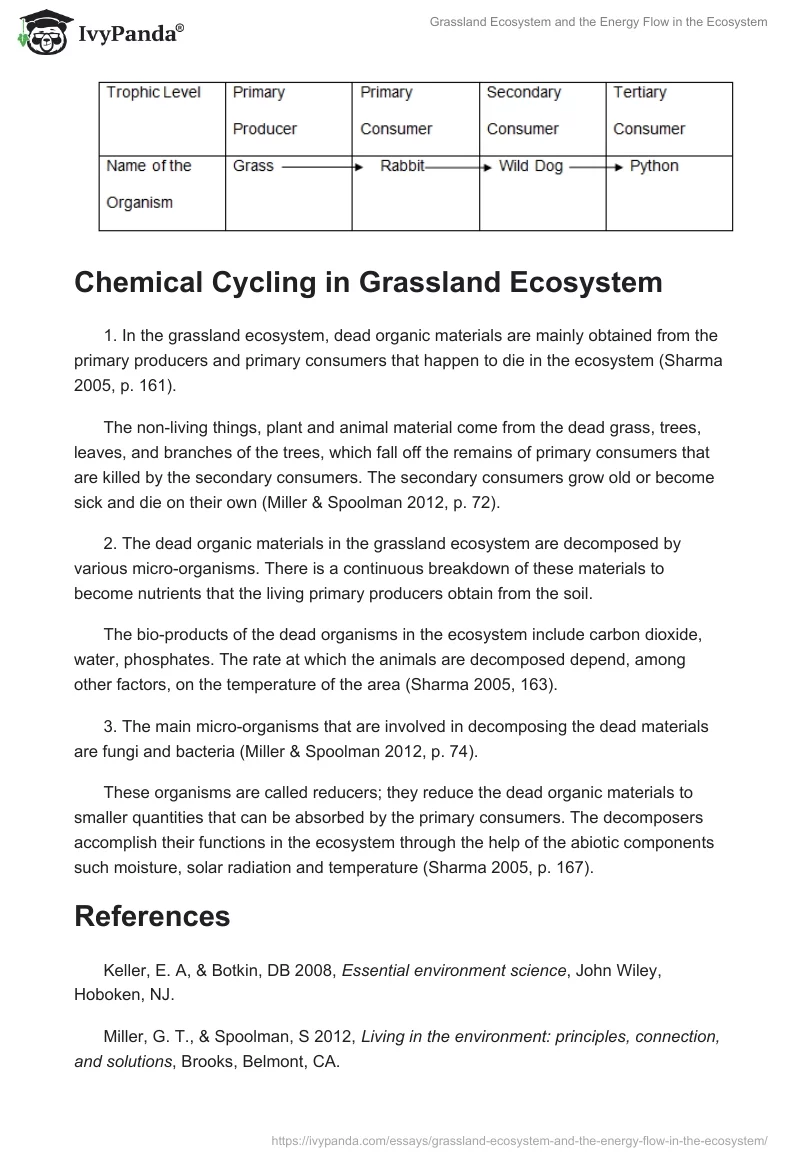1. The primary producers in an ecosystem refer to those organisms in the ecological unit that are capable of synthesising inorganic compounds to produce bio-mass.
The primary producers in grassland ecosystem are the plants consumed by animals (Miller & Spoolman 2012, p. 62). The main three primary producers in the ecosystem include grass, trees and flowers. Among the three, grass is the most common primary producer in ecosystems.
2. A primary consumer in an ecosystem is an animal that consumes and obtains its energy from plants (Miller & Spoolman 2012, p. 62).
In the grass land ecosystem, the main types of primary consumers are wild beasts, which feed on the grass, gazelles, which feed on leaves, and giraffes, which feed on foliage. Apart from the leaves and foliages, the primary consumers in the grass land ecosystem can also feed on the roots and backs of trees.
3. A secondary consumer in an ecosystem is an animal that feeds on and obtains its energy from other animals (Primary consumers). The secondary consumers do not get as much energy the primary consumers (Miller & Spoolman 2012, p. 64). In the grassland ecosystem, the main types of secondary consumers are hyenas, which consume gazelles, wild dogs, which feed on the rabbits and leopards that feed on the wild beasts.
4. A tertiary consumer is the animal at the topmost level in an ecosystem that only feeds on the secondary consumers (Miller & Spoolman 2012, p. 65). In the grassland ecosystem, pythons that feed on the wild dogs are examples of tertiary consumers.
The tertiary consumers are always fewer in any ecosystem. There is a loss of energy from one level to another in an ecosystem. Therefore, tertiary consumers have to be fewer in number to survive on the energy reduction (Keller & Botkin 2008, p. 56).
A Simple Food Chain in Grass Land Ecosystem

Chemical Cycling in Grassland Ecosystem
1. In the grassland ecosystem, dead organic materials are mainly obtained from the primary producers and primary consumers that happen to die in the ecosystem (Sharma 2005, p. 161).
The non-living things, plant and animal material come from the dead grass, trees, leaves, and branches of the trees, which fall off the remains of primary consumers that are killed by the secondary consumers. The secondary consumers grow old or become sick and die on their own (Miller & Spoolman 2012, p. 72).
2. The dead organic materials in the grassland ecosystem are decomposed by various micro-organisms. There is a continuous breakdown of these materials to become nutrients that the living primary producers obtain from the soil.
The bio-products of the dead organisms in the ecosystem include carbon dioxide, water, phosphates. The rate at which the animals are decomposed depend, among other factors, on the temperature of the area (Sharma 2005, 163).
3. The main micro-organisms that are involved in decomposing the dead materials are fungi and bacteria (Miller & Spoolman 2012, p. 74).
These organisms are called reducers; they reduce the dead organic materials to smaller quantities that can be absorbed by the primary consumers. The decomposers accomplish their functions in the ecosystem through the help of the abiotic components such moisture, solar radiation and temperature (Sharma 2005, p. 167).
References
Keller, E. A, & Botkin, DB 2008, Essential environment science, John Wiley, Hoboken, NJ.
Miller, G. T., & Spoolman, S 2012, Living in the environment: principles, connection, and solutions, Brooks, Belmont, CA.
Sharma, P. D 2005, Ecology and environment, Rastogi Publications, Meerut.


